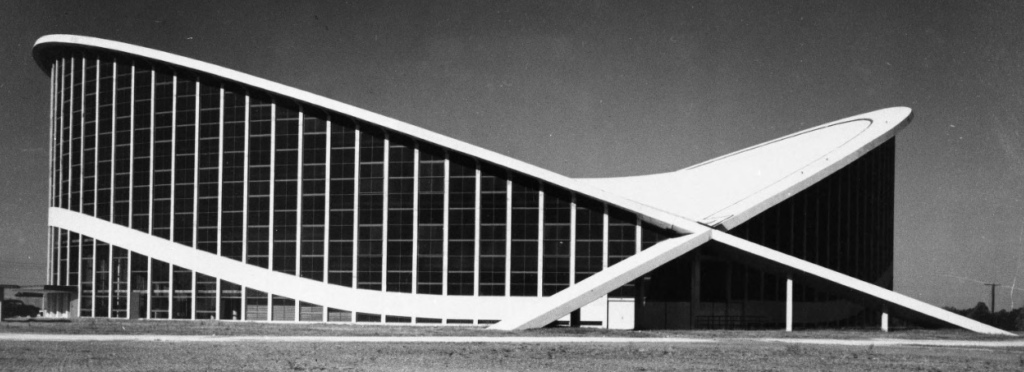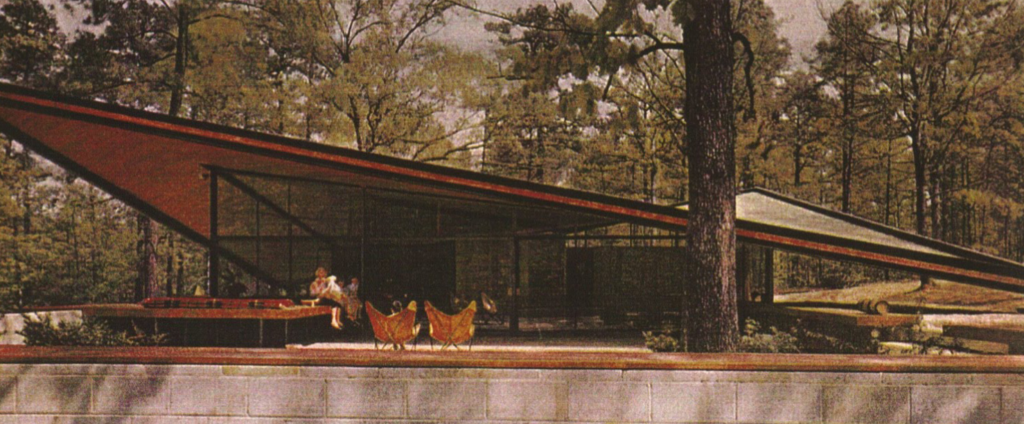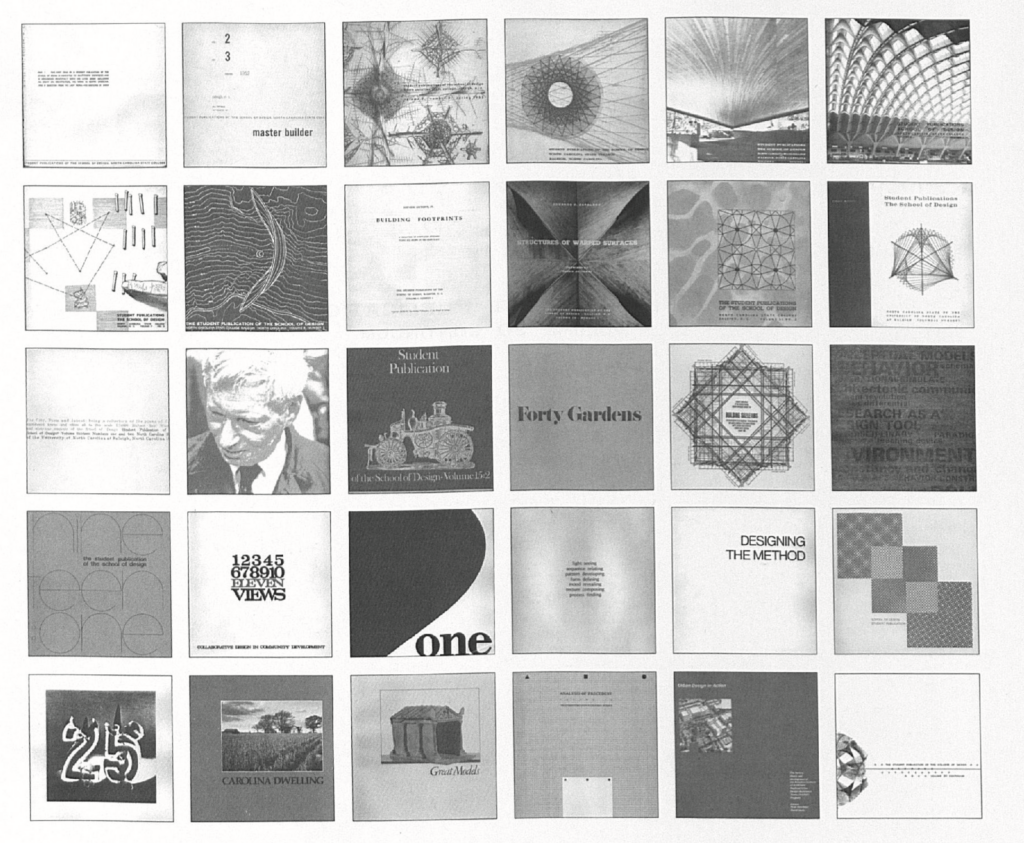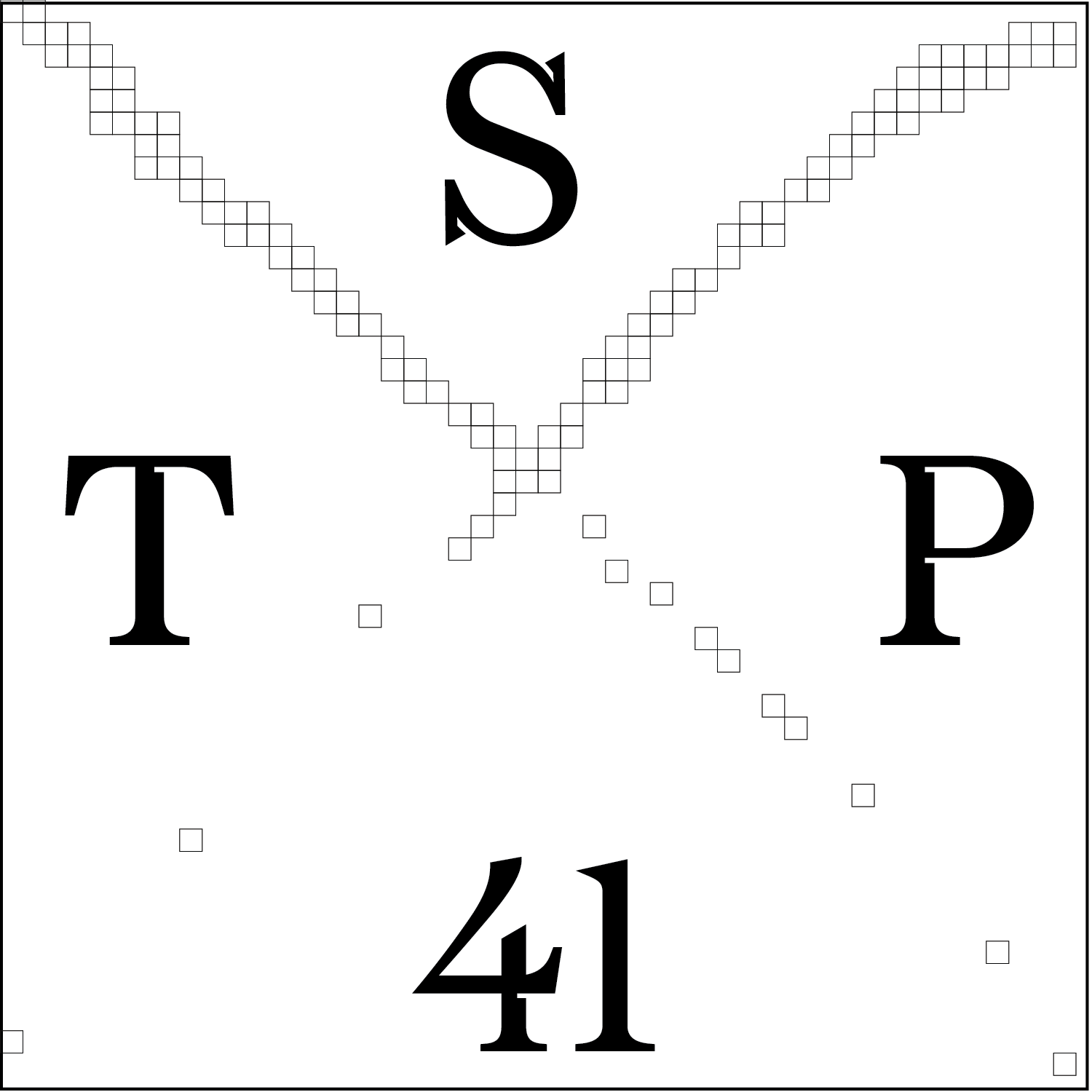1951-
2025
Our History
The Origin
The Student Publication is the oldest student-run design publication in the country.
It was established in 1951 to honor the memory of Matthew Nowicki, the first head of the architecture program at NC State University. Nowicki was an intellectual pillar in the beginning of the School of Design and was instrumental in publishing the first design bulletin. Nowicki designed the J.S. Dorton Arena, also known as the Paraboleuma, a 7,610-seat multi-purpose arena on the grounds of the North Carolina State Fair in Raleigh. Nowicki tragically died in a plane crash before the construction phase of the Dorton Area begun, which opened in 1952. The first volume of the publication was a tribute to his life and the legacy he left in the world of design and architecture.

1960s
A focus on structure, form, and language.
The Student Publication volumes published during this decade focused on new forms, materials, and structures in architecture. The architecture-driven content began to explore and question some of the assumptions of form and material in design.
In addition, the publication shifted to consider and question the process of design in addition to the materials and form. The volumes featuring various forms of architecture during this decade offered heavy visual essays, highlights of design work created within the college and varied forms of discourse such as drawings, math equations, scales of cities and textual essays. One Contributor, Eduardo Catalano, shared his valuable voice in designing and constructing a new form and shape of homes using the hyperbolic paraboloid. As The Student Publication took on new forms and explored various structures, as the process was as impactful and significant as the form, language and materials.

1970s
A growing focus on community and context
In the 70s, The Student Publication shifted focus from the structure and language of design to its impact. Henry Sanoff was a leading voice in the College on the method of community-based design and the vernacular landscape. Design process was further analyzed as an understanding began to grow on how design effects the world around us with the growing presence of design community. The volumes published during this decade were a response to an environment and focused on the context of an idea. As the voice of The Student Publication began to grow in the College and the community, the students remained focused on gaining the support of faculty, past contributors and future contributions. The publication was held in reverence for its exceptional content and the students pushed for continued monetary support from the design community to affirm the longevity of published volumes in the many years to come.

1980s &90s
On Hiatus...
Due to a variety of reasons including faculty oversight and economic limitations, The Student Publication went on hiatus for over 20 years. It was reinstitued in 2003 with
a retrospective.
2000
A product and voice for
design students
The Student Publication of the College of Design returned to circulation with Volume 30, otherwise called “The Phoenix,” a retrospective glance at the past sixty years of the publications. In so doing, Volume 30 revealed the rich fabric of ideas generated by this environment of interdisciplinary exchange. With a renewed focused on the students and the importance of a student-initated and driven publication, five volumes were proposed by students interested in discussing concepts in design. This new found vision relaunched the publication producing annual volumes devoted to one overarching theme and crossing into multiple disciplines. In 2012, The Student Publication was made into a class. The class brought new energy and vision to the form, structure and content of the publication and focused on ideation, generation of content, student contributions as and community involvement as well as overall awareness. During the ideation phase of Volume 35, the logo for The Student Publication was designed and launched by the students. The Student Publication continues to discover and strive to create compelling conversations with significant multidisciplinary perspectives from both inside and outside of design.

Today
Continuing the legacy
In 2012, The Student Publication became a cross-disciplinary course where students engaged in design writing, as well as concept and content development of the publication itself.
